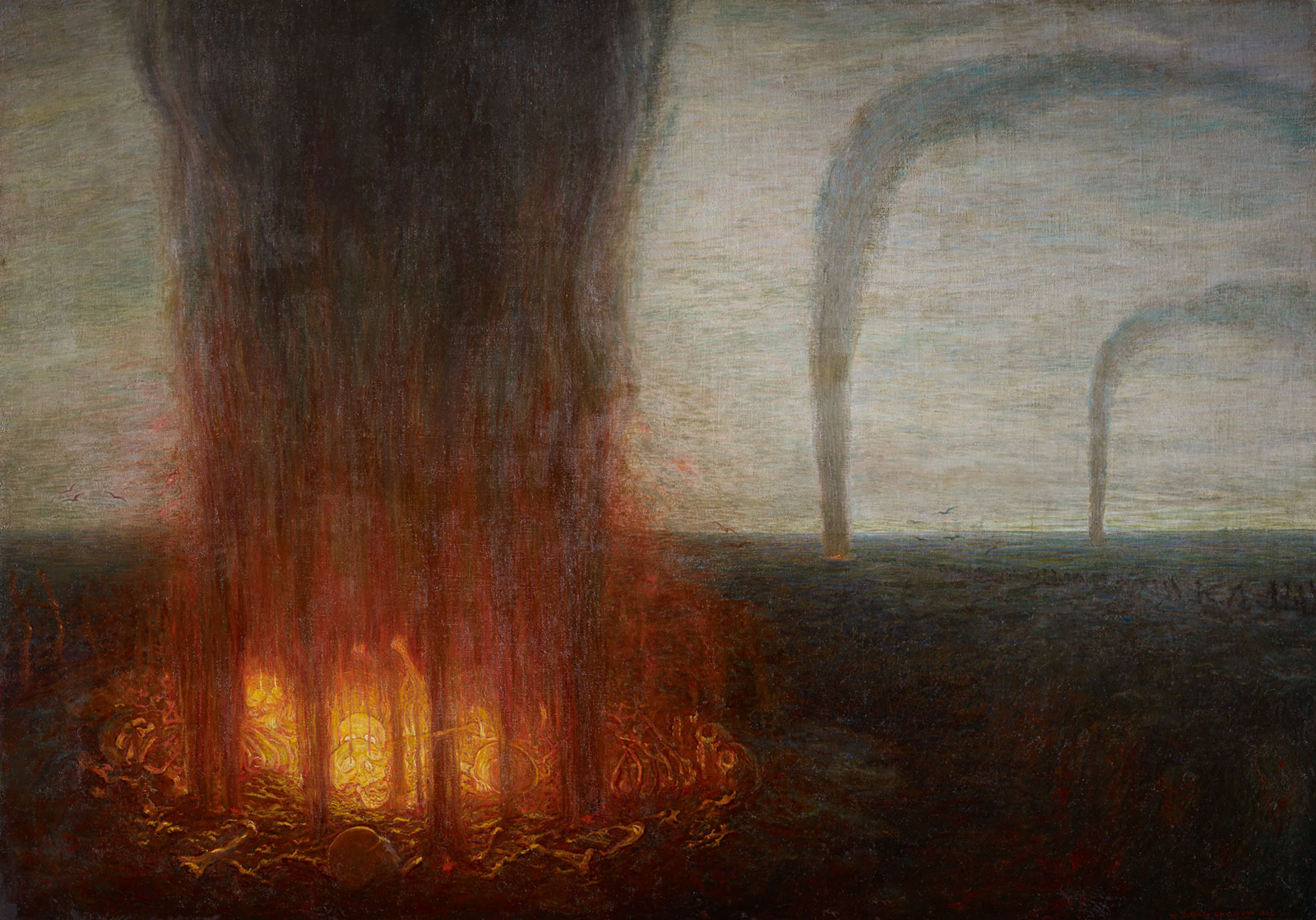March 11, 2024
Alberto H. Gagliardo's "Fumo" Painting

Painting, Fumo [Smoke], 1922
Alberto Helios Gagliardo (Italian, 1893–1987)
Genoa, Italy
Oil on canvas
The Wolfsonian–FIU, The Mitchell Wolfson, Jr. Collection, XX1989.126
Through the lens of late 19th and early 20th-century landscape art, the Wolfsonian exhibition The Big World: Alternative Landscapes in the Modern Era tells the story of the rapid urban, industrial, and technological growth that culminated in two world wars and a reshaping of the land as we know it. Viewers encounter a wide range of perspectives and responses to this change over the course of the show—what many considered progress and prosperity was to others reckless environmental degradation; and what some saw as a righteous obligation to one's country, others saw as the boundless torment of war.
Installed in The Big World's section "The Battle for the Land" is an ominous oil painting by Genoa artist Alberto Helios Gagliardo. Made in 1922, Fumo (Italian for "smoke") offers a glimpse into the nightmarish aftermath of trench warfare during the First World War. Large-scale and confrontational, the work is the exhibition's most graphic and disturbing indictment of war.

Fumo paints a grim picture of the frontlines after the fighting stops. Three burning piles of human remains send trails of black smoke into the sky over a recently deserted battlefield—now a ravaged, muddy wasteland with barbed wire stretching far out to the horizon, a few distant scavenger birds the only visible signs of life. A 1921 preparatory oil-on-paper study for the painting (now in the collection of our Italian sister museum, The Wolfsoniana) reveals that Gagliardo added the farthest burning pile later on to add to the depth and expanse of destruction.

In Fumo's foreground, the brightest part of the painting, a furnace-like fire glows, consuming pieces of arms, legs, bodies, and skulls. One skull appears to look at the viewer and scream as flames pour out from its eyes. The scene is appalling: a portrayal of a common grave, its dead made faceless and anonymous by the blaze.

Gagliardo was born in Genoa in 1893 and trained in the city's Ligustica Academy of Fine Arts. He was a passionate Symbolist painter who tackled social and ethical themes throughout much of his work. Although not personally a veteran of either world war, he was deeply affected by the oppressive atmosphere they brought about in Europe and became an admirer of the non-violent ideals of Leo Tolstoy. As in Fumo, Gagliardo's anti-war stance is apparent in his 1943 painting Woman with Child Running from Fire, an image evocative of the Italian campaign of the Second World War, depicting a frantic mother cradling her infant as she flees barefoot from a bombarded apartment building.

Gagliardo, once a member of the Theosophical Society of Genoa, was also interested in religion and philosophy. Christian motifs would often make an appearance in his work, as evident in La Pietà Umana's representation of two industrial laborers. Gagliardo drew inspiration for the scene from the Western artistic tradition of the Pietà, a theme made famous by Michelangelo's marble sculpture Madonna della Pietà in which the dead Christ is shown lying in the arms of his grieving mother. The painting's central figure appears to boldly step out to us while holding his deceased friend, as if to show us the tragedy brought about by suffering under such miserable working conditions.
These works are powerful reminders of how visual imagery can bring to life the uncertainty, despair, and devastation that often follow in the wake of historical events. In The Big World, Fumo is one such testament to a moment, cutting to the core of what was in the hearts and minds of the people who witnessed the "Great War." And beyond that scene, Gagliardo is a lasting example of a visual artist who used his skills in expression to advocate for a better world in a time that seemed nearly hopeless.
– Nicola Salino (FIU class of 2026), curatorial intern
